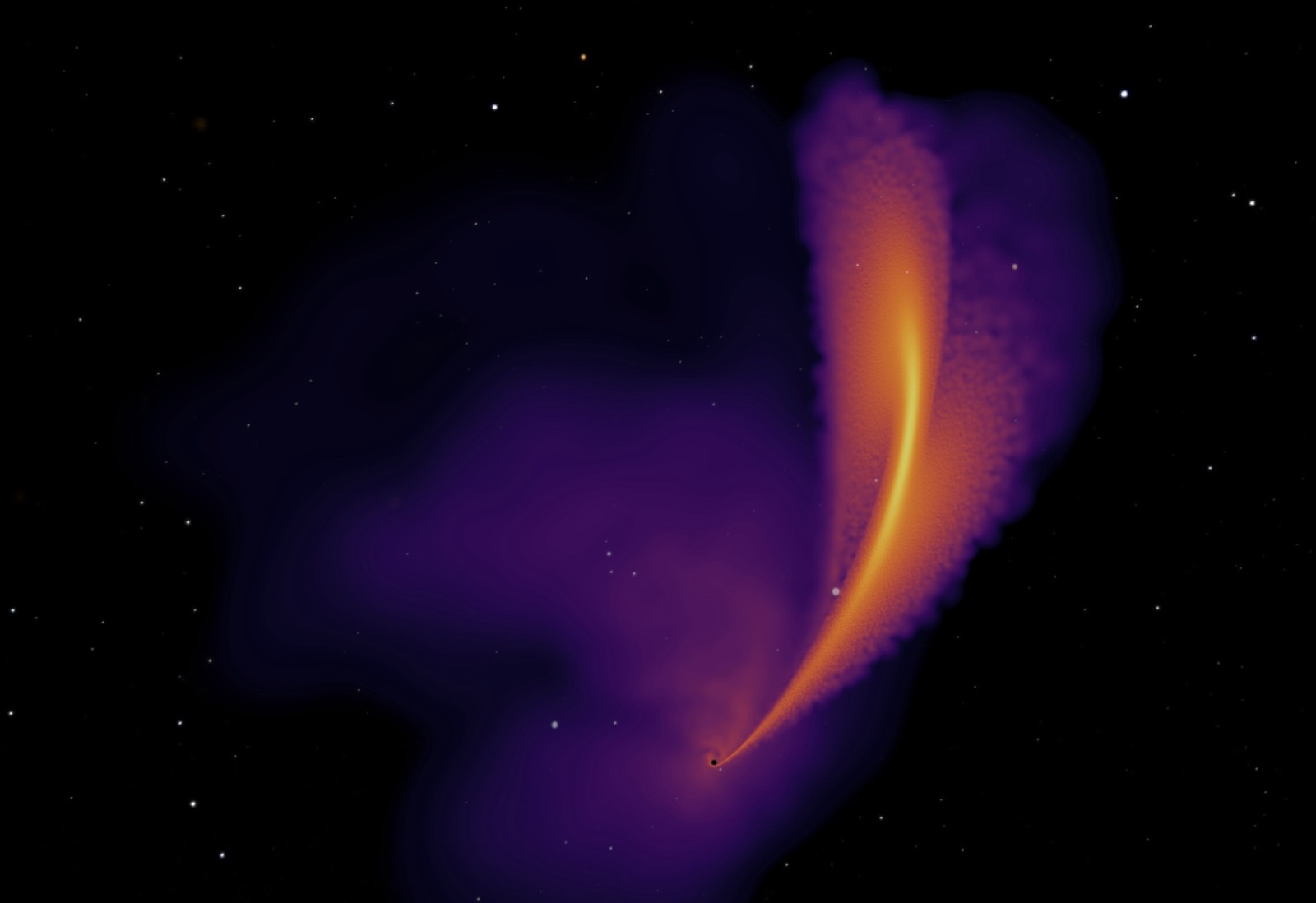Seminar: Taj Jankovič - Radiation-hydrodynamics of star-disc collisions

Speaker: Taj Jankovič, Institute of Physics of the Czech Academy of Sciences, Czech Republic
Title: Radiation-hydrodynamics of star-disc collisions
Abstract
Quasi-periodic eruptions (QPEs) are newly discovered bursts of X-ray light near supermassive black holes, occurring about every 10 hours. One possible explanation is the star-disc model, where a star repeatedly crashes into the black hole’s surrounding gas disc, creating shock waves that release energy.
To study this, we ran the first 3D simulations of these collisions, focusing on how the gas moves and radiates light. We modeled the star as a solid sphere and examined a small section of the disc. Our results show that the collision creates a bow-shaped shockwave, heating the gas not just in front of the star but also to the sides. The impact also pushes gas outward in both directions, but more gas and energy are released forward than backward. We found that changes in the star’s size, speed, and the density of the disc affect this imbalance. Certain conditions may naturally produce the alternating bright and dim flashes seen in some QPEs.
